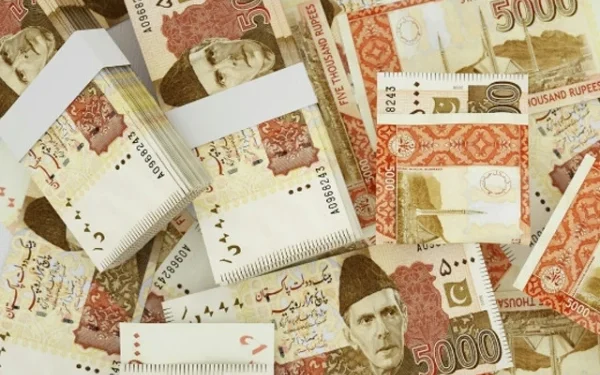Islamabad – In a landmark announcement, Federal Minister for Planning, Development and Special Initiatives Ahsan Iqbal revealed on Thursday that the federal government’s Public Sector Development Programme (PSDP) expenditure for the fiscal year 2024-25 has reached a historic high of Rs 1.05 trillion. This milestone was achieved despite significant hurdles, including delays caused by the partial shutdown of the Accountant General of Pakistan Revenue (AGPR) systems.
The announcement underscores the government’s commitment to accelerating public investment and infrastructure development, a key pillar for sustainable economic growth and employment generation. The remarkable expenditure achievement reflects successful coordination between various government departments and strategic financial planning.
📊 Understanding the PSDP: What It Means and Why It Matters
The Public Sector Development Programme (PSDP) is the federal government’s primary development initiative that allocates funds to national infrastructure, health, education, water, and energy projects. It plays a critical role in socio-economic uplift, particularly in underdeveloped regions.
For the fiscal year 2024-25, the revised PSDP budget was Rs 1.1 trillion, with projects aimed at boosting regional connectivity, water conservation, clean energy, industrial modernization, and poverty alleviation.
This recent expenditure record of Rs 1.046 trillion is the highest ever utilization of PSDP funds in Pakistan’s history, indicating improved project execution, stronger disbursement mechanisms, and enhanced monitoring by the Ministry of Planning.
📅 Last-Minute Surge: Rs 449 Billion Spent in June Alone
One of the most remarkable elements of this fiscal performance was the massive spike in spending during June 2025, the final month of the fiscal year. According to official data released by the Planning Ministry, Rs 449 billion, equivalent to 43% of the total PSDP expenditure, was spent in June alone.
This late surge was attributed to two key factors:
- Delayed fund releases due to AGPR’s partial system shutdown.
- Booking of external development loans, particularly in foreign-assisted projects.
The ministry revealed that Rs 141 billion in additional expenditure was booked between July 2 and July 9, after the fiscal year officially ended. This brought the total to Rs 1.046 trillion, surpassing initial estimates of Rs 905 billion and setting a new benchmark in public spending efficiency.
💬 Ahsan Iqbal: “This Is a Historic Moment for Pakistan’s Development Planning”
Addressing a press conference in Islamabad, Planning Minister Ahsan Iqbal described the achievement as a “historic moment” and a “reflection of our unwavering commitment to national development, despite administrative and financial hurdles.”
He acknowledged that the finance ministry’s delays—particularly from the AGPR—had earlier stalled PSDP utilization at around Rs 905 billion, but quick coordination and resolution mechanisms helped unlock the remaining funds. He also credited the AGPR and budget controllers for working overtime in the final days to facilitate last-minute project disbursements.
“For the first time in Pakistan’s history, PSDP spending has crossed the Rs 1 trillion mark. This demonstrates our resolve to prioritize infrastructure, uplift backward areas, and strengthen the development framework,” Iqbal added.
🌍 External Loans and Foreign Assistance: Rs 80 Billion Boost
One of the major contributors to this record expenditure was external financing. According to the Planning Ministry, approximately Rs 80 billion of the total expenditure came from foreign loans and assistance, which were booked late in the fiscal year. These funds were primarily allocated to large-scale projects related to:
- Energy and power infrastructure
- Water supply and irrigation
- Transport and highways
- Digital infrastructure
Such assistance typically comes from development partners like the World Bank, Asian Development Bank (ADB), Islamic Development Bank (IsDB), and bilateral donors such as China, Japan, and Saudi Arabia. Their role in Pakistan’s development agenda remains pivotal, especially in financing large-scale infrastructure and climate resilience projects.
💸 Primary Budget Surplus Achieved: A Boost for IMF Commitments
While the PSDP surged forward, the Finance Ministry confirmed that Pakistan had provisionally achieved its primary budget surplus target for FY2024-25, a key performance indicator under the International Monetary Fund (IMF) Extended Fund Facility (EFF).
This surplus suggests that despite higher development expenditure, Pakistan maintained fiscal discipline and avoided budget overruns—a crucial development ahead of the next round of IMF talks for continued loan disbursements.
🏗️ Key Sectors That Benefitted from the PSDP Surge
The record-breaking PSDP utilization directly impacted several priority sectors under Pakistan’s development strategy:
1. Energy
Major investment was directed toward hydropower projects (e.g., Dasu, Mohmand, and Diamer-Bhasha Dams) and transmission lines under the National Transmission and Dispatch Company (NTDC).
2. Water Resources
Ongoing irrigation projects, small dams, and flood control systems in Sindh, Balochistan, and Khyber Pakhtunkhwa received significant funding.
3. Transport and Connectivity
The China-Pakistan Economic Corridor (CPEC) Phase II projects, including new highways, motorways, and railway tracks, saw accelerated fund disbursement.
4. Education and Health
Projects such as the Establishment of University Campuses in Underdeveloped Areas, Sehat Sahulat Programme, and National Health Initiatives were prioritized.
5. Climate and Environment
Renewable energy, afforestation, and National Disaster Risk Management programs also received increased PSDP allocations.
🧭 Challenges and Lessons for the Future
Despite the record performance, experts and insiders acknowledge some key challenges:
- Overreliance on year-end disbursements, which limits efficiency in project execution.
- Delays in AGPR processes, which affected earlier disbursements.
- Limited absorption capacity of provincial governments and federal ministries.
To improve long-term outcomes, experts suggest the need for:
- Quarterly performance-based disbursement of PSDP funds.
- Greater coordination between finance and planning ministries.
- Strengthening the Public Investment Management (PIM) framework for project appraisal, execution, and monitoring.
🔮 What’s Next? PSDP 2025-26 Outlook
Following this successful fiscal year, the government is expected to present an even more ambitious PSDP for 2025-26, with focus on:
- Digital economy and innovation
- Clean energy transition
- Urban resilience and housing
- Skill development and jobs for youth
- Public-private partnerships (PPPs)
Minister Ahsan Iqbal has already signaled a shift towards “Outcome-Based Budgeting”, emphasizing measurable results over symbolic allocations.
📌 Final Thoughts: A Milestone Year for Public Development
The increase in PSDP expenditure to Rs 1.05 trillion not only marks a historic fiscal milestone but also reflects the government’s determination to invest in long-term economic sustainability. It sends a strong signal to development partners, investors, and the public that Pakistan is ready to prioritize infrastructure, human development, and economic modernization.
While challenges remain, the successful disbursement of record funds within one fiscal year sets a precedent for improved fiscal governance and targeted public investment.

























